Garden sculptures can be a stylish and sophisticated addition to any outdoor space. Adding art through sculptural elements helps to create an inviting ambiance, while also bringing texture and colour into your garden.
Whether you’re looking for decorative animal statuary or abstract pieces, there are plenty of options when it comes to garden sculpture ideas.
This guide will provide useful tips and advice on how to choose the perfect garden sculptures for your outdoor space.
Garden Sculpture Ideas
Add Impact With Yard Art Ideas
Yard art is a great way to add a bold and eye-catching element to your outdoor space. It can also be used to create visual impact, by drawing the eye and providing visual interest in otherwise plain areas.
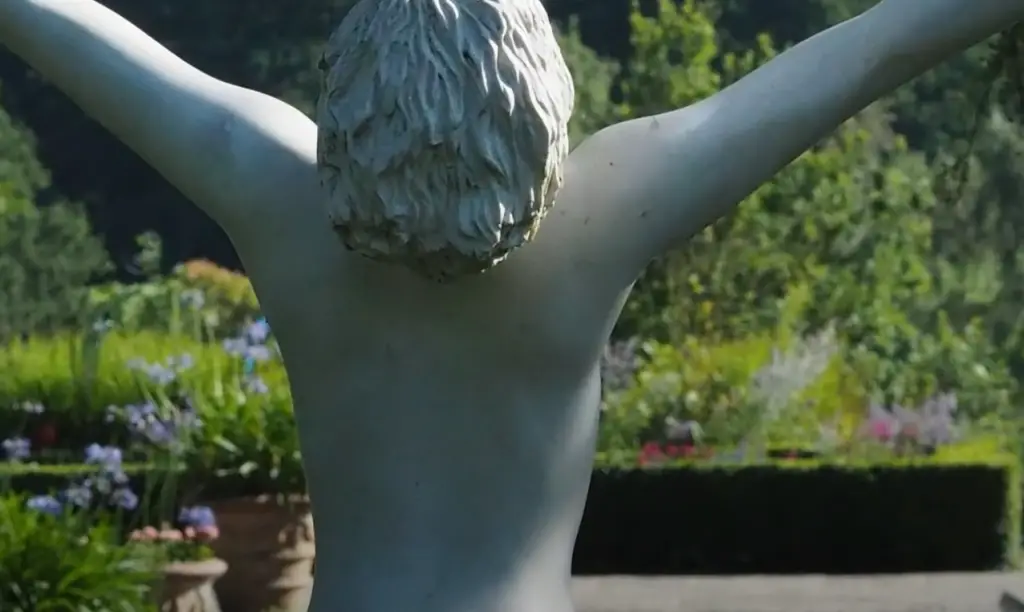
Before making any decisions about what yard art pieces you’d like in your garden, it’s important to consider the surrounding environment and how the sculpture itself might look in relation to other elements.
Provoke A Reaction
If you’re looking for something a bit more abstract, perhaps opt for a sculpture that provokes thought or has philosophical meaning.
Maybe consider an outdoor structure in the form of a labyrinth or a gorgeous abstract piece designed to reflect upon your own thoughts and feelings.
Create A Focal Point
If you want to draw attention to a certain area of your garden, sculpture can be used as an effective focal point.
Whether it’s a large animal statue or an eye-catching abstract piece, sculptures are perfect for creating visual depth and contrast in your outdoor space.
Suit The Sculpture To The Location
When choosing a garden sculpture, be sure to consider the overall look and feel of your outdoor space.
On the other hand, if you’re looking for something more contemporary than abstract sculptures are perfect for creating an edgy and modern atmosphere.
Choose A Practical Material
When it comes to choosing the right material for your sculpture, practicality is key. Natural materials such as stone and wood are a great option if you’re looking for something that will last a long time outdoors, while lighter metals like aluminium or bronze can be used to produce more decorative pieces.
Create An Element Of Surprise
Adding a surprise element to your garden can be a great way to bring the outdoors alive.
Consider incorporating unexpected sculptures, like large blown glass pieces or outdoor furniture with sculptural qualities.
These kinds of elements are perfect for adding character and personality to your outdoor space.
Appeal To The Senses With Tactile Sculptures
A great way to add an element of interest to your garden is by incorporating tactile sculptures.
These can be pieces made from natural materials such as wood, stone or metal, and they often feature intricate designs or carvings that allow visitors to explore the sculpture with their hands.
Use Lighting
Lighting is a great way to show off your sculpture and create an atmosphere of enchantment.
Uplighting, downlighting and spotlights are all effective methods for drawing attention to certain elements in your garden, while also providing a sense of safety and security.
Choose Ease Of Maintenance
When choosing sculptures for your garden, it’s important to consider how easy they’ll be to maintain.
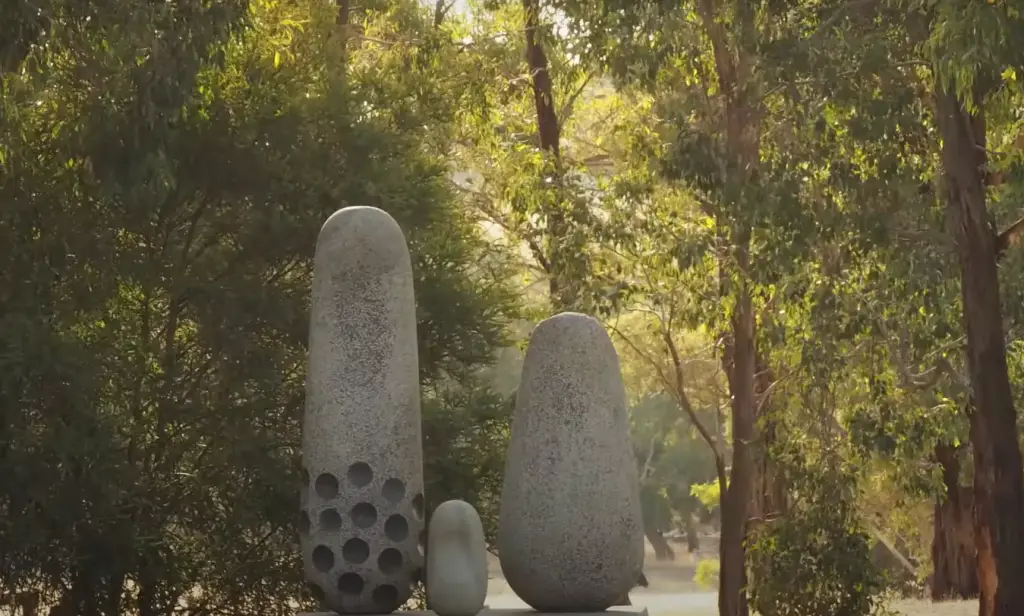
Natural materials such as stone and wood are usually low-maintenance, while metal pieces may require more frequent cleaning and polishing to keep them looking their best.
Take Inspiration From Sculpture Parks
For inspiration, take a look at what’s available in your local sculpture parks. Here you can find beautiful examples of garden sculptures from all over the world, and they often provide great ideas for how to incorporate art into your outdoor space.
How Can Art Make My Backyard More Interesting?
By incorporating art into your backyard, you can create a visually interesting and engaging space. Sculptures can be used to draw the eye to certain areas of the garden, evoke emotion or provide a focal point for relaxation.
Whether you opt for a classic animal sculpture or something more abstract, choosing the right pieces can have a huge impact on the look and feel of your backyard.
With some creativity and imagination, you can create an inviting atmosphere sure to impress family and friends alike.
FAQ
What can I use for outdoor sculpture?
Outdoor sculptures can be made from a variety of materials such as stone, wood, metal and glass. Depending on the look you’re trying to achieve and how long you want it to last outdoors, there are many different options available to suit your needs.
How do I choose an outdoor sculpture?
When choosing an outdoor sculpture, it’s important to consider the overall style of your garden and take into account any practicality needs such as material durability and ease of maintenance.
If you’re looking for something more abstract or eye-catching, then pieces made from metals or glass can be a great choice.
What is the best way to display outdoor sculptures?
The best way to display outdoor sculptures is by considering their placement in relation to the other elements of your garden. Take time to consider the range of lighting, furniture and other decor you have in your backyard.
You can then use these as a basis for deciding where to place sculpture pieces for maximum effect. Lighting is also an important factor – you can use uplighting, downlighting and spotlights to draw attention to certain elements in your garden.
How do I choose a garden sculpture?
When choosing a garden sculpture, it’s important to think about the type of effect you’re trying to create. Consider using pieces that complement the overall style of your outdoor area while also adding interest and personality.
You should also consider practicality needs such as material durability and ease of maintenance.
Natural materials such as stone and wood are usually low-maintenance, while metal pieces may require more frequent cleaning and polishing.
Additionally, take a look at what’s available in your local sculpture parks for inspiration – they often provide great ideas for how to incorporate art into your outdoor space.
Which one is suitable for garden sculpture?
When choosing a garden sculpture, material durability and ease of maintenance are important factors.
Natural materials such as stone and wood are usually low-maintenance, while metal pieces may require more frequent cleaning and polishing.

Additionally, if you’re looking for something more abstract or eye-catching, then pieces made from metals or glass can be a great choice.
What are the benefits of garden sculpture?
Garden sculptures can provide a range of benefits, from creating a visually interesting and engaging space to adding character and personality to any outdoor area.
Sculptures can also be used to draw the eye to certain areas of the garden or evoke emotion, making it more enjoyable to spend time in.
Art pieces also provide a focal point for relaxation, allowing you to take some time out from your busy life and enjoy nature.
Additionally, sculptures can act as conversation starters and bring people together, making them great for social gatherings or special events.
How to decorate your garden with statues?
Decorating your garden with statues is a great way to create a visually interesting and engaging space. When choosing sculptures, consider the overall style of your garden and take into account any practicality needs such as material durability and ease of maintenance.
Take time to consider the range of lighting, furniture and other decor you have in your backyard. You can then use these as a basis for deciding where to place sculpture pieces for maximum effect.
Lighting is also an important factor – you can use uplighting, downlighting and spotlights to draw attention to certain elements in your garden
Additionally, take a look at what’s available in your local sculpture parks for inspiration – they often provide great ideas for how to incorporate art into your outdoor space.
Finally, don’t forget to take the time to enjoy your sculptures and appreciate the beauty that they bring to your garden!
What are the 4 basic types of sculpture in art?
The four basic types of sculpture in art are reliefs, free-standing statues, abstract shapes and decorative pieces.
Reliefs are sculptures that are carved into a flat surface such as a wall or ceiling; free-standing statues are independent figures that stand on their own; abstract shapes include geometric forms and symbols; and decorative pieces may be crafted from a variety of materials and used for a range of purposes, such as garden art.
What are the best materials for outdoor sculptures?
The best materials for outdoor sculptures depend on your desired effect and practicality needs. Natural stone is usually low-maintenance and can provide a timeless look to any garden.
Metal pieces require more frequent cleaning and polishing, but can give a contemporary feel.
Additionally, glass sculptures can be used to create eye-catching pieces that draw the eye. You should also consider any local climate conditions before deciding on material – some materials may not fare well in extreme weather.
In general, it’s best to choose materials that are durable and resistant to rust, corrosion and fading.
What are 3 common materials used in sculpture?
Three common materials used in sculpture are stone, metal and wood. Each material has its own unique properties and applications, from creating realistic figures to abstract shapes.
Stone is one of the oldest materials used for sculpture and can provide a timeless look; metals such as bronze, copper and iron are often used for more contemporary pieces; while wood is a versatile material that can be used to create a range of sculptures, from realistic figures to intricate carvings.
What are the advantages of using sculpture in your garden?
The advantages of using sculpture in your garden include creating a visually interesting and engaging space, adding character and personality to any outdoor area, providing a focal point for relaxation and bringing people together.
What is the best way to incorporate sculpture into your garden?
The best way to incorporate sculpture into your garden is to consider the overall style of your backyard. Take time to observe any existing furniture, lighting and other decor you have in place, then use these as a basis for deciding where to place sculptures for maximum effect.
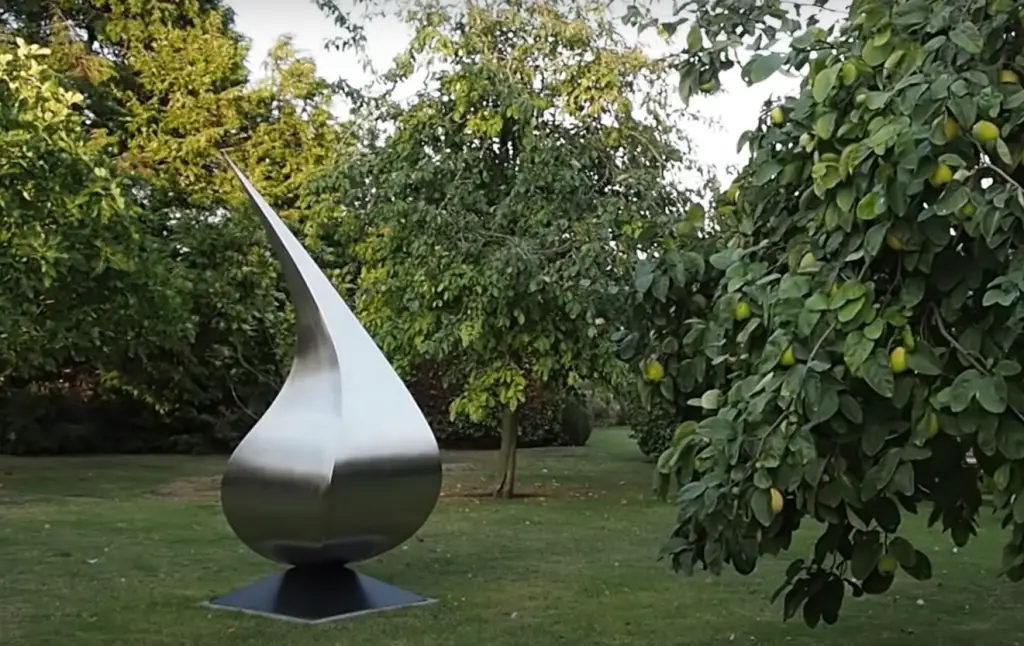
Additionally, take advantage of local sculpture parks for inspiration – they often provide great ideas for how to bring art into your outdoor space. Finally, don’t forget to enjoy your sculptures and appreciate the beauty that they bring to your garden!
What are the different styles of garden sculpture?
The different styles of garden sculpture vary depending on personal preference and tastes. Some popular options include abstract shapes, realistic figures, decorative pieces, metal sculptures and stone carvings.
Abstract shapes may range from geometric forms to more organic designs; realistic figures often feature people or animals; decorative pieces can be crafted from a variety of materials; metal sculptures are often made from bronze, copper and iron; while stone carvings can provide a timeless look.
What is the importance of garden sculpture?
The importance of garden sculpture is that it provides an opportunity to transform your outdoor space into a visually engaging and inviting area.
Garden sculptures can be used to create a sense of calm and relaxation, while also adding character and personality to any garden.
Additionally, sculptures can be used as great conversation starters when entertaining guests outdoors!
What tips should be kept in mind when selecting garden sculptures?
When selecting garden sculptures, it’s important to consider the size and scale of the piece. Smaller pieces can be used to add subtle touches, while larger sculptures can become a focal point for any outdoor area.
Additionally, think about how the sculpture will fit into your existing landscape design – consider style, texture, colour and materials to help you create a cohesive look.
Finally, ensure that sculptures are made from durable materials that can withstand harsh weather conditions.
What types of maintenance are required for garden sculptures?
The amount and type of maintenance required for garden sculptures depends on the material used.
Additionally, any sculptures should be checked regularly for signs of wear and tear to ensure they remain in good condition.
What should be avoided when placing garden sculptures?
When placing garden sculptures, it’s important to avoid overcrowding the space. Try to keep a consistent shape and size throughout your outdoor area, while also leaving enough room for other elements such as plants and furniture.
Additionally, try to ensure that the sculpture is placed in an area that won’t be in direct sunlight for long periods of time, as this can cause the sculpture to become discoloured or fade. Finally, be aware of any local laws or regulations regarding building or displaying sculptures in public areas.
What is the best way to showcase garden sculptures?
The best way to showcase garden sculptures is by using lighting. Strategically positioning lights around a sculpture can add drama and depth, while also highlighting the features of a piece.
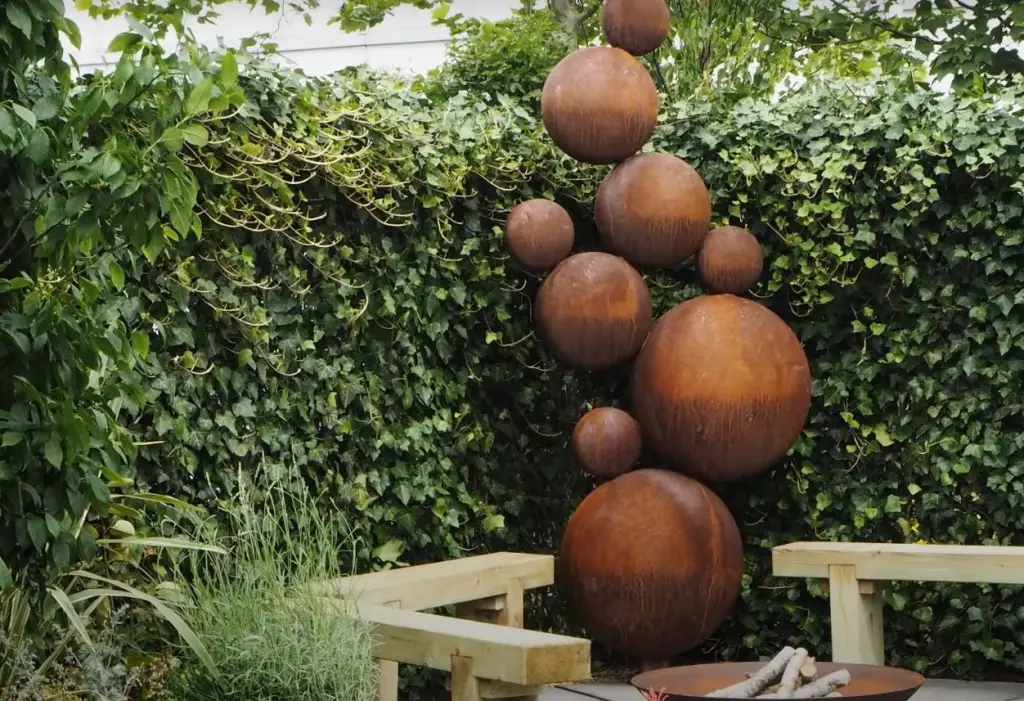
Additionally, you could place uplighters at the base of a sculpture to give it an ethereal glow in the evening. You could also use a combination of light and shadow to create interesting shapes and patterns throughout your garden.
With some creativity, lighting can be used to transform any outdoor space into an enchanting area.
How can garden sculptures be used as focal points in a landscape?
Garden sculptures can be used to create beautiful focal points throughout the landscape. Select pieces that will stand out from your existing design and offer an eye-catching feature for visitors.
Position sculptures so they’re visible from most angles and place them in prominent locations such as near pathways or patios.
Additionally, consider the overall colour palette of your outdoor area and select sculptures that will complement existing features.
Finally, adding a water feature or other decorative elements around a sculpture can further enhance its beauty.
How can garden sculptures be used to add character and personality?
Garden sculptures are a great way to add character and personality to any outdoor area. Select pieces that reflect your own personal style, or use them as an expression of your culture or heritage.
Additionally, consider the type of mood you want to create in your space – for example, a large and imposing sculpture can be used to add an air of grandeur, while a whimsical piece can be used to create a playful atmosphere.
With some imagination and creativity, you can use sculptures to make any garden unique and inviting.
How can I use sculptures to create a sense of movement in my garden?
Using sculptures to create a sense of movement in your garden is a great way to add interest and dynamism to any outdoor area. To achieve this, select pieces that have sinuous lines or subtle curves that lead the eye through the landscape.
Additionally, you could opt for kinetic sculptures that move with the wind to create a visually captivating effect.
Finally, positioning sculptures at different heights can provide a sense of depth and perspective, while also creating an interesting pathway for viewers to follow.
Why is it important to maintain garden sculptures?
Maintaining garden sculptures is essential in order to keep them looking at their best. Depending on the material, metal sculptures may need to be polished and treated occasionally; stone or concrete pieces may require resealing every so often; and wood sculptures may need to be oiled or sealed on a yearly basis.
Does the size of a garden sculpture matter?
Yes, the size of a garden sculpture does matter. When selecting a piece, it’s important to consider how it will fit in with your existing outdoor area.
If you have limited space, opt for smaller sculptures that won’t overwhelm the area. On the other hand, if you have a large garden, then you can choose larger sculptures that will make a bold statement.
Additionally, keep in mind the scale of other elements in your space – for example, avoid positioning a large sculpture close to smaller features as this could look out of proportion.
Does the position of a garden sculpture matter?
Yes, the position of a garden sculpture matters. Placing it in an area where it will get plenty of sunlight is essential for some sculptures, as this can help keep materials such as metal from rusting.
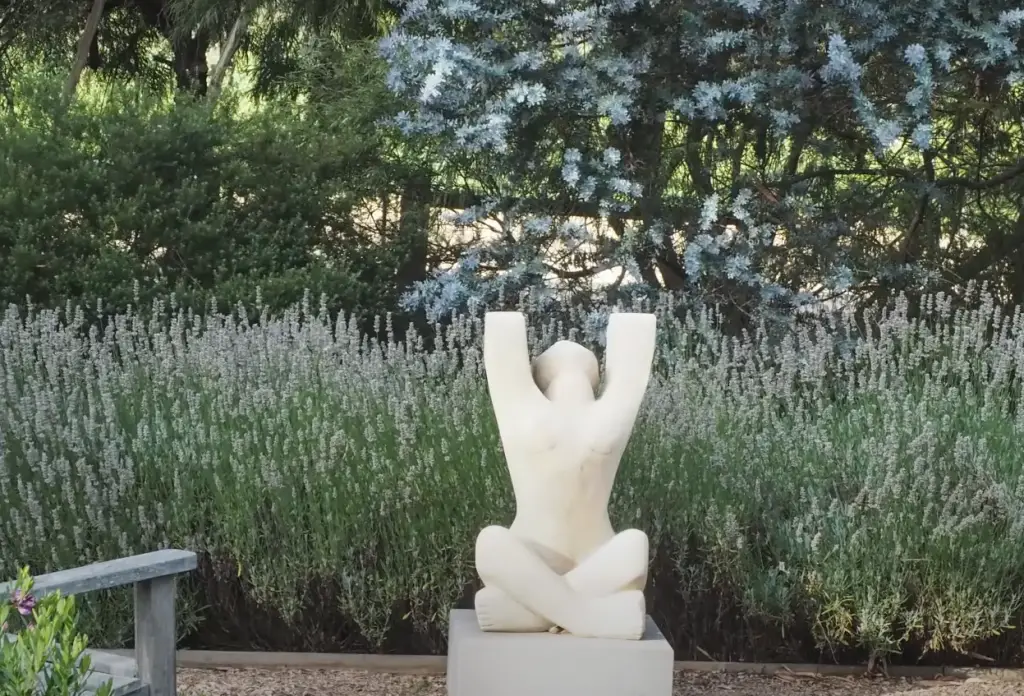
Additionally, think about how much attention you want to draw to the piece – positioning it near pathways or entrances can ensure it will be seen by visitors, while placing it in an area away from direct views may create a more subtle effect.
Finally, keep in mind how the sculpture interacts with existing features and elements – positioning different pieces together can help them to complement each other and add depth to your outdoor space.
Do garden sculptures need to be protected from the elements?
Yes, certain types of garden sculptures may require some protection from the elements. For example, metal sculptures are prone to rusting and should be treated with a protective coating or sealant before being placed outside.
Additionally, stone and concrete sculptures may require periodic sealing in order to keep them looking their best.
It’s also a good idea to position sculptures in an area that is sheltered from the elements, such as under a porch or in a covered area. This will help to ensure they remain in good condition for years to come.
Does the material of a garden sculpture matter?
Yes, the material of a garden sculpture can have an impact on its appearance and durability. For instance, metal sculptures are great for creating a modern look but may require more maintenance than other materials.
Stone or concrete sculptures are classic options that tend to be low-maintenance, while wood sculptures provide a warm and natural aesthetic.
Additionally, some sculptures may be made from a combination of materials – selecting one with an interesting mix of textures can help to create a visually striking effect.
Do I need to consider the style of a garden sculpture?
Yes, it’s important to consider the style of a garden sculpture when selecting one for your outdoor space. Traditional pieces often feature intricate patterns and classic shapes, while modern sculptures may have more abstract or minimal designs.
Additionally, there are many sculptures that blend elements from multiple styles – these can be great for creating a unique and eye-catching look.
Finally, think about how the sculpture fits with your existing garden style – selecting one that complements other features will help to create a harmonious overall design.
Does a garden sculpture need regular maintenance?
This will depend on the type of material used. Metal sculptures may need to be treated with sealants or protective coatings every so often; and wood sculptures may need to be oiled or sealed on a yearly basis.
Stone and concrete sculptures, on the other hand, typically don’t require much maintenance apart from an occasional cleaning.
Additionally, it’s a good idea to check on sculptures regularly for any signs of damage or wear and tear – this will help ensure they remain in good condition for years to come.
Do I need to consider the size of a garden sculpture?
Yes, it’s important to take into account the size of a garden sculpture when selecting one for your outdoor space.
It should be proportional to other elements in the area – for instance, avoid positioning a large sculpture close to smaller features as this could look out of proportion.
Additionally, think about how the sculpture will look from different angles and distances – choosing one that looks good from multiple viewpoints is key to creating a visually balanced garden.
Does the position of a garden sculpture matter?
Yes, positioning can have a huge impact on the overall effect of a garden sculpture. For example, placing one in an area that’s highly visible will create a bold statement, while putting it in
Can I include plants around a garden sculpture?
Yes, incorporating plants around a garden sculpture can create an interesting and dynamic look. For example, small shrubs or flowers can be planted around the base of the sculpture to draw attention to its shape and texture.
Additionally, you could use trailing vines or climbers to help soften the edges – this will help to create a more organic and natural look.
Finally, don’t forget to check on the plants regularly to make sure they stay healthy and in good condition.
Can I use lighting to highlight a garden sculpture?
Yes, lighting can be used to great effect when it comes to highlighting a garden sculpture. For instance, spotlights can be used to bring out the details of the sculpture – this will create an eye-catching display in the evening.

Alternatively, you could use soft up-lighting around the base of the sculpture – this will help to create a subtle and atmospheric effect. Additionally, consider using motion sensors or timers to control the lighting – this will make it easier to switch between day and night settings as needed.
Can I customise a garden sculpture?
Yes, there are many ways to customise a garden sculpture to suit your own personal style. For example, you could add other materials such as stone or metal for an interesting textural effect; or you could use paint or dye to give the sculpture a unique colour.
Additionally, think about adding decorations or embellishments – this can be a great way to personalise the sculpture and make it truly unique.
Finally, if you’re feeling crafty, why not create your own sculpture from scratch? This will give you complete control over the design and allow you to create something that reflects your own artistic vision.
Which materials should I use for a garden sculpture?
The type of material you choose will depend on the look and feel you want to create. For instance, metal sculptures are ideal if you’re after a modern or abstract effect; while wood sculptures can give your outdoor space a more rustic charm.
Stone and concrete sculptures will last longer, but they can be more difficult to work with – if you’re not sure, it’s best to seek professional advice before embarking on this type of project.
Additionally, think about the environment in which you’ll be placing the sculpture – certain materials may need special treatment or protection from the elements in order to maintain their appearance.
Which styles of garden sculptures are available?
The range of styles available is vast – from classic and traditional pieces to modern abstract designs. Additionally, you can choose from a variety of textures, colours and materials; so there’s sure to be something to suit all tastes.
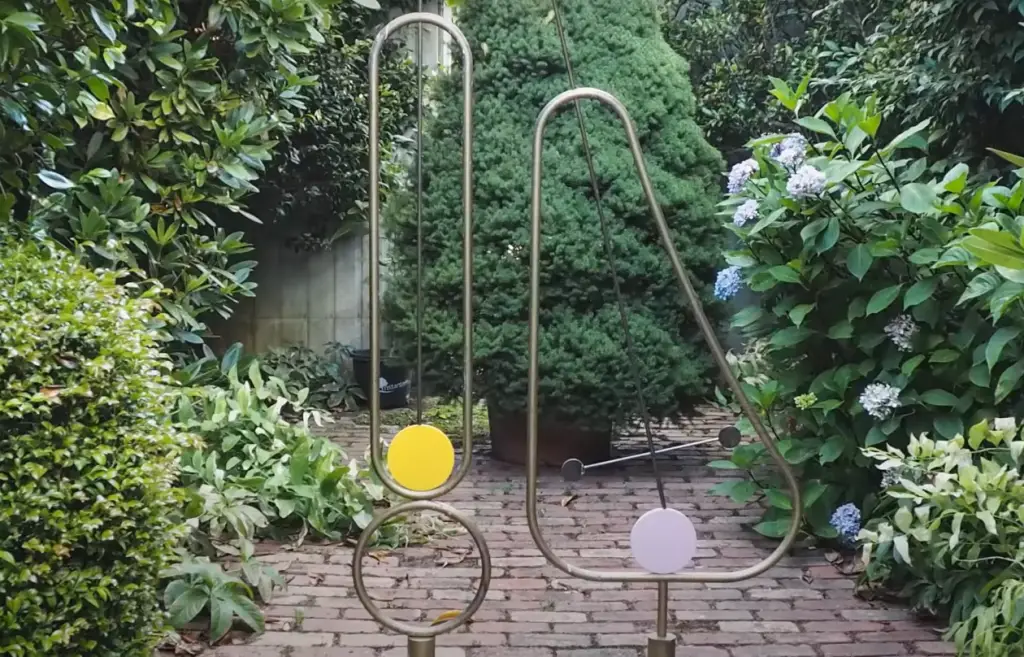
If you’re looking for inspiration, try browsing online or visiting your local garden centre to get an idea of the variety that’s available.
Finally, if you’re feeling creative, why not try making your own sculpture? This could be a fun way to add a unique touch to your outdoor space.
Useful Video:How to choose and position garden ornaments and sculpture
Conclusion
When it comes to garden sculptures, there’s a great range of styles and materials available; so you should have no problem finding something that suits your tastes.
Additionally, there are many ways to customise and highlight the sculpture in order to create a unique look.
Finally, don’t forget to choose carefully when selecting the material – this will help ensure that your sculpture is able to stand the test of time. With the right design and care, you can create a stunning outdoor display that will be enjoyed for years to come.
References:
- https://www.homesandgardens.com/gardens/yard-art-ideas





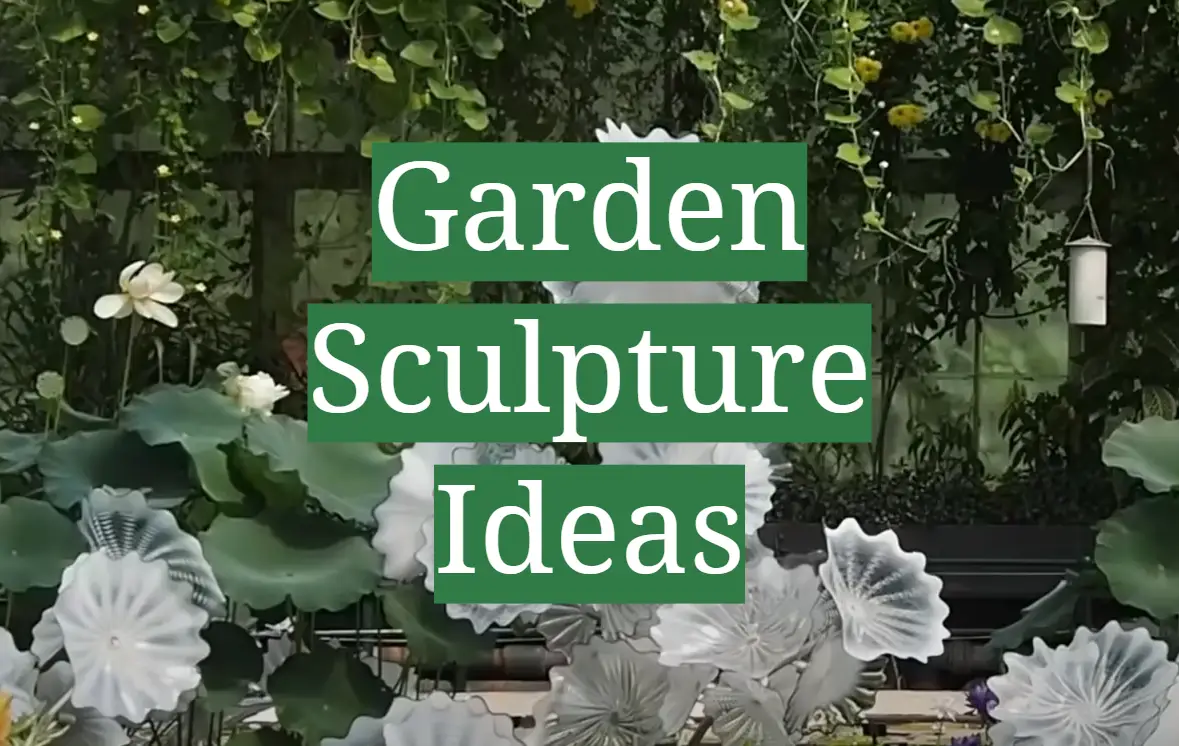




Leave a Reply
View Comments